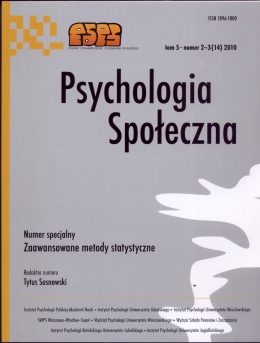Analiza dyskryminacyjna. Podstawowe założenia i zastosowania w badaniach społecznych
Discriminant analysis. Basic assumptions and applications in social research
Author(s): Piotr RadkiewiczSubject(s): Psychology
Published by: Wydawnictwo Naukowe Scholar Sp. z o.o.
Keywords: discriminant analysis; grouping variable; linear discriminant function; group centroids; classification; observed and predicted group membership
Summary/Abstract: This article is dedicated to the discriminant analysis – a statistical method that allows to test differences between groups of observations (two or more), based on a set of selected independent variables (predictors). It may be effectively applied to various fields of social sciences and practice (psychology, sociology, political science, economy, law). Linear combination of independent variables, obtained on a basis of the discriminant analysis model, serves as a criterion of assigning observations to different groups. Information carried by an independent variables is saved in a synthetic form as discriminant function scores. Discriminant analysis may have two goals: discrimination (separation) and classification (allocation). In the first case, a researcher tries to explain causes of differences between groups of observations by making use of their characteristics available as “disciriminating” variables. In the second case, a researcher seeks to find a mathematical equation, that combines observation’s group characteristics in order to effectively predict the unknown group category to which an observation belongs. First part of the article contains a general description of the statistical model; the second one includes two empirical examples of its application – for two and for four groups of observations.
Journal: Psychologia Społeczna
- Issue Year: V/2010
- Issue No: 14
- Page Range: 142-161
- Page Count: 20
- Language: Polish

